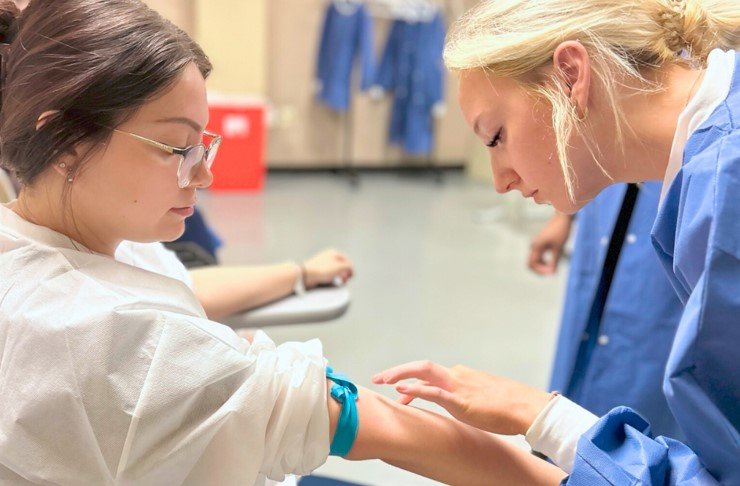Ensuring Regulatory Compliance for Hospital Equipment Maintenance and Calibration: Key Steps and Best Practices
Summary
- Hospitals in the United States must comply with strict regulatory standards for maintaining and calibrating equipment to ensure patient safety.
- Proper training and education for staff members responsible for equipment management is essential to meeting regulatory requirements.
- Implementing a comprehensive equipment management program that includes regular maintenance, calibration, and documentation is crucial for regulatory compliance.
- Training programs should be comprehensive and cover topics such as equipment maintenance procedures, calibration processes, and regulatory requirements.
- Staff members should receive regular updates and refresher courses to stay informed about any changes to regulatory standards or equipment guidelines.
- Hospitals should invest in training resources such as manuals, online courses, and hands-on workshops to ensure that staff members have the necessary knowledge and skills.
- Hospitals should develop a standardized maintenance schedule for each piece of equipment based on manufacturer recommendations and regulatory requirements.
- Calibration processes should be performed regularly by trained technicians to ensure that equipment is operating accurately and within acceptable tolerances.
- All maintenance and calibration activities should be thoroughly documented, including dates, procedures, and personnel involved, to provide a clear audit trail for regulatory inspections.
- Regular equipment audits should be conducted to assess the condition and performance of hospital equipment and identify any maintenance or calibration needs.
- Quality Control measures, such as equipment testing and validation, should be implemented to verify the accuracy and reliability of equipment measurements.
- Any equipment failures or malfunctions should be promptly addressed, and proper documentation of incidents and corrective actions should be maintained for regulatory purposes.
Introduction
Hospitals in the United States must adhere to rigorous regulatory standards to ensure the safety and quality of patient care. One critical aspect of regulatory compliance is the maintenance and calibration of hospital equipment. In this article, we will discuss the steps that hospitals need to take to ensure that their equipment is properly maintained and calibrated according to regulatory standards.
Training and Education
One of the first steps that hospitals need to take to ensure that their equipment is maintained and calibrated according to regulatory standards is to provide proper training and education to staff members responsible for equipment management. It is essential that staff members are knowledgeable about the specific requirements for each piece of equipment and how to properly maintain and calibrate them.
Key Points:
Equipment Management Program
Implementing a comprehensive equipment management program is crucial for ensuring that hospital equipment is maintained and calibrated according to regulatory standards. This program should include regular maintenance schedules, calibration processes, and documentation practices to track and monitor equipment performance.
Key Points:
Quality Assurance and Monitoring
Quality assurance and monitoring are essential components of maintaining and calibrating hospital equipment according to regulatory standards. Hospitals should establish processes to monitor equipment performance, identify any issues or Discrepancies, and take corrective actions as needed to ensure compliance.
Key Points:
Conclusion
Ensuring that hospital equipment is maintained and calibrated according to regulatory standards is essential for the safety and quality of patient care. By providing proper training and education, implementing a comprehensive equipment management program, and establishing quality assurance processes, hospitals can meet regulatory requirements and maintain a high standard of equipment performance.

Disclaimer: The content provided on this blog is for informational purposes only, reflecting the personal opinions and insights of the author(s) on the topics. The information provided should not be used for diagnosing or treating a health problem or disease, and those seeking personal medical advice should consult with a licensed physician. Always seek the advice of your doctor or other qualified health provider regarding a medical condition. Never disregard professional medical advice or delay in seeking it because of something you have read on this website. If you think you may have a medical emergency, call 911 or go to the nearest emergency room immediately. No physician-patient relationship is created by this web site or its use. No contributors to this web site make any representations, express or implied, with respect to the information provided herein or to its use. While we strive to share accurate and up-to-date information, we cannot guarantee the completeness, reliability, or accuracy of the content. The blog may also include links to external websites and resources for the convenience of our readers. Please note that linking to other sites does not imply endorsement of their content, practices, or services by us. Readers should use their discretion and judgment while exploring any external links and resources mentioned on this blog.
